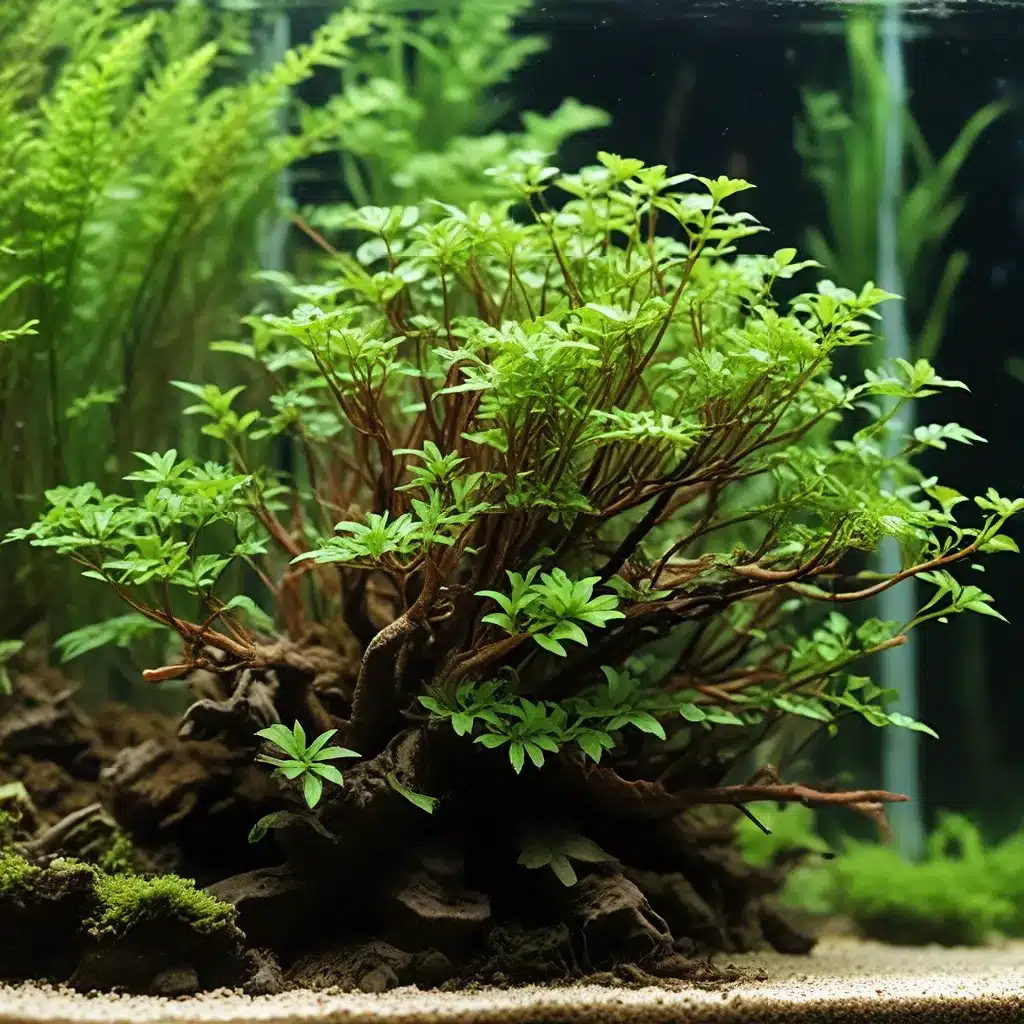
Mastering the Art of Plant Acclimation
Introducing new aquatic plants to your existing aquarium setup can be both an exciting and delicate process. Aquarium enthusiasts understand the importance of maintaining a well-balanced ecosystem, and successfully acclimating plants is a crucial step in ensuring the long-term health and vibrancy of your underwater garden.
In the past, the common advice was to slowly acclimate new fish to the tank’s water parameters to minimize stress and potential shock. However, the prevailing wisdom in the modern aquarium hobby suggests that this same principle may not always apply to aquatic plants. Let’s explore the nuances of plant acclimation and uncover the best practices for seamlessly integrating new species into your aquascape.
Submerged vs. Emersed Growth
One of the key considerations when acclimating aquatic plants is understanding the difference between submerged and emersed growth forms. Submerged plants are those that have adapted to grow entirely underwater, while emersed plants maintain a portion of their structure above the water’s surface.
When purchasing new aquatic plants, it’s important to determine whether they have been grown in a submerged or emersed environment. Submerged plants, such as those grown in a specialized aquarium nursery, are generally better suited for a seamless transition into your underwater ecosystem. These plants have developed the necessary adaptations to thrive in a fully submerged setting, making the acclimation process more straightforward.
On the other hand, emersed-grown plants, which are often found in terrestrial nurseries or garden centers, may require a more gradual acclimation process. These plants have adapted to the higher oxygen levels and different light conditions found above the water’s surface. Transitioning them directly into a submerged aquarium environment can be a significant shock to their system, leading to stunted growth, discoloration, or even plant mortality.
The Acclimation Process
Regardless of the plant’s growth form, the acclimation process is essential to ensure a smooth transition and minimize stress on your new aquatic additions. Here are the key steps to follow:
-
Quarantine and Inspection: Before introducing any new plants to your main aquarium, it’s crucial to quarantine them in a separate container or tank. This allows you to closely inspect the plants for any signs of pests, diseases, or damage that could potentially spread to your existing setup. Carefully remove any dead or dying leaves or stems, and gently rinse the plants in dechlorinated water to remove any residual chemicals or contaminants.
-
Water Parameter Adjustment: Aquatic plants are sensitive to changes in water chemistry, pH, and temperature. Gradually acclimate the new plants to your aquarium’s specific water parameters by floating the sealed bag or container in the tank for at least 30 minutes. This allows the water temperature to equalize, and the pH and other factors to slowly stabilize. Avoid sudden changes, as they can cause significant stress to the plants.
-
Lighting Transition: If the new plants were grown under different lighting conditions, it’s essential to gradually adjust the lighting in your aquarium to match their needs. This may involve increasing or decreasing the intensity, duration, or color spectrum of your tank’s lighting system. A sudden shift in lighting can disrupt the plants’ photosynthetic processes and lead to stunted growth or even die-off.
-
Submerged Acclimation: For emersed-grown plants, the next step is to slowly submerge the leaves and stems to allow for a gradual transition to the underwater environment. You can do this by partially submerging the plants for a few hours, then gradually increasing the submersion depth over the course of a few days. This helps the plants adapt to the lower oxygen levels and different light conditions found in a submerged aquarium setting.
-
Nutrient Supplementation: Aquatic plants have specific nutrient requirements, and the availability of these nutrients in your aquarium may differ from their previous growth environment. Consider providing a balanced fertilizer or nutrient-rich substrate to support the plants’ transition and ongoing health.
Monitoring and Maintenance
Proper monitoring and maintenance are crucial during and after the acclimation process. Observe the new plants closely for any signs of stress, such as leaf discoloration, wilting, or stunted growth. If you notice any issues, adjusting the water parameters, lighting, or nutrient levels may be necessary to help the plants adapt.
Regular water changes, pruning, and routine maintenance of your aquarium’s equipment and substrate will also support the long-term success of your newly introduced plants. By following these best practices, you can ensure a seamless integration of new aquatic species into your thriving underwater ecosystem.
Conclusion
Mastering the art of plant acclimation is a valuable skill for any aquarium enthusiast. By understanding the nuances of submerged and emersed growth forms, implementing a structured acclimation process, and maintaining a vigilant monitoring regime, you can confidently introduce new aquatic plants to your tank and watch them flourish. Remember, patience and attention to detail are key to cultivating a lush, vibrant, and sustainable aquascape. Happy aquascaping!

